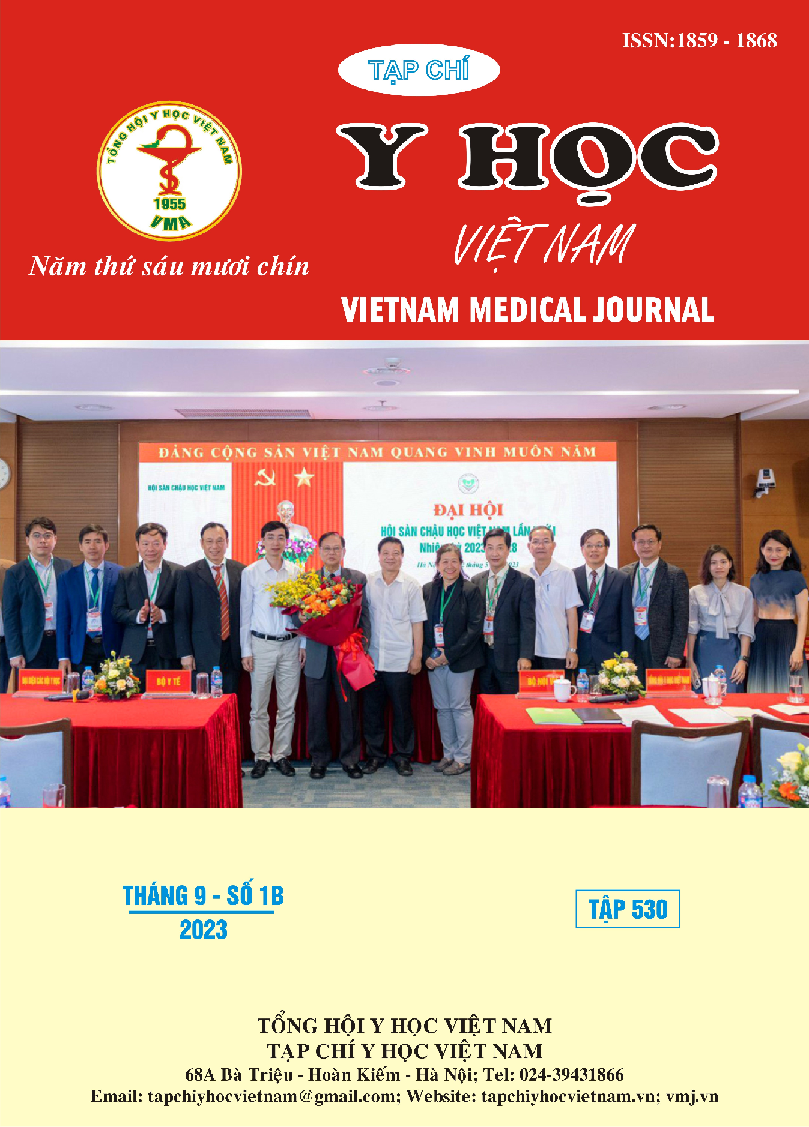SURGICAL TREATMENT OF MANDIBULAR CONDYLAR FRACTURES: A SYSTEMATIC REVIEW
Main Article Content
Abstract
This study was conducted with the aim of synthesizing and evaluating the outcomes of surgical treatment for mandibular condylar fractures using rigid fixation. The search strategy involved two electronic databases, PubMed and Embase (up to January 2023), to identify relevant documents meeting the following criteria: (1) evaluating the outcomes of surgical treatment for mandibular condylar fractures using bone fusion, (2) outcomes included at least one of the following criteria: mouth opening range (3) study designs included clinical trials, randomized control trial, cohort studies. A total of 13 articles were selected and included in the study. The results showed that 91.6% of the studies demonstrated that patients achieved a normal maximum mouth opening range, 66.7% of the studies reported successful restoration of proper occlusion for patients after a follow-up period of 6-12 months. The majority of patients included in the studies experienced pain symptoms immediately after surgery, and 100% of the studies indicated that there were no abnormal pain symptoms after 6 to 12 months.
Article Details
Keywords
mandibular condyle fracture, surgical treatment, internal fixation, mouth opening, malocclusion, pain.
References
2. Shi J, Chen Z, Xu B. Causes and treatment of mandibular and condylar fractures in children and adolescents: a review of 104 cases. JAMA Otolaryngol-- Head Neck Surg. 2014;140(3):203-207. doi:10.1001/jamaoto.2013.6300
3. Silvennoinen U, Iizuka T, Pernu H, Oikarinen K. Surgical treatment of condylar process fractures using axial anchor screw fixation: a preliminary follow-up study. J Oral Maxillofac Surg Off J Am Assoc Oral Maxillofac Surg. 1995;53(8):884-893; discussion 894. doi:10.1016/0278-2391(95)90274-0
4. Tuấn PH. Hình thái lâm sàng và điều trị gãy lồi cầu xương hàm dưới do chấn thương. Đại Học Hà Nội. 1997; Luận văn thạc sĩ y học.
5. Tuấn PH. Tình trạng chấn thương lồi cầu tại Bệnh viện Răng Hàm Mặt Trung ương Hà Nội. Published online 2017.
6. El-Mahdy MA, Ezz MK, Shindy MI. Assessment Of Subcondylar Fracture Treated Using Two Four-Hole Straight Miniplates Versus The Synthes® Matrixmandible Trapezoidal Plate: Randomized Controlled Trial. Clin Med. 2020;07(09).
7. Anehosur V, Kulkarni K, Shetty S, Kumar N. Clinical outcomes of endoscopic vs retromandibular approach for the treatment of condylar fractures-a randomized clinical trial. Oral Surg Oral Med Oral Pathol Oral Radiol. 2019;128(5):479-484. doi:10.1016/j.oooo.2018.12.007
8. Ahuja SA, Galinde J, Asnani U, Mistry YA. Comparative Evaluation of Clinical Outcomes Using Delta Plates and Conventional Miniplates for Internal Fixation of Mandibular Condylar Fractures in Adults. J Oral Maxillofac Surg Off J Am Assoc Oral Maxillofac Surg. 2018;76(6):1255-1266. doi:10.1016/j.joms.2017.12.018
9. Ganguly A, Mittal G, Garg R. Comparison between 3D delta plate and conventional miniplate in treatment of condylar fracture: A randomised clinical trial. J Cranio-Maxillo-fac Surg Off Publ Eur Assoc Cranio-Maxillo-fac Surg. 2021;49(11):1026-1034. doi:10.1016/j.jcms.2021.01.026
10. Cynthia S, Karthik R, Vivek N, Saravanan C, Prashanthi G. Does three-dimensional plate offer better outcome and reduce the surgical time following open reduction and internal fixation of adult mandibular unilateral subcondylar fractures. A randomized clinical study. J Oral Maxillofac Surg. Published online 2020. https://www.cochranelibrary.com/central/doi/10.1002/central/CN-02237138/full


